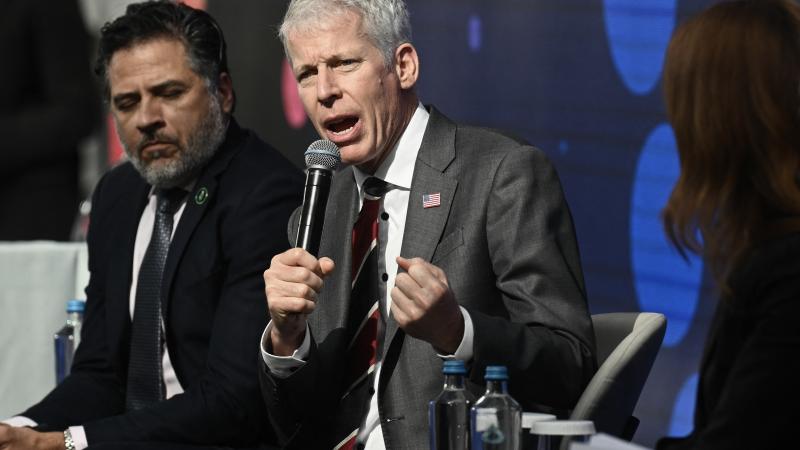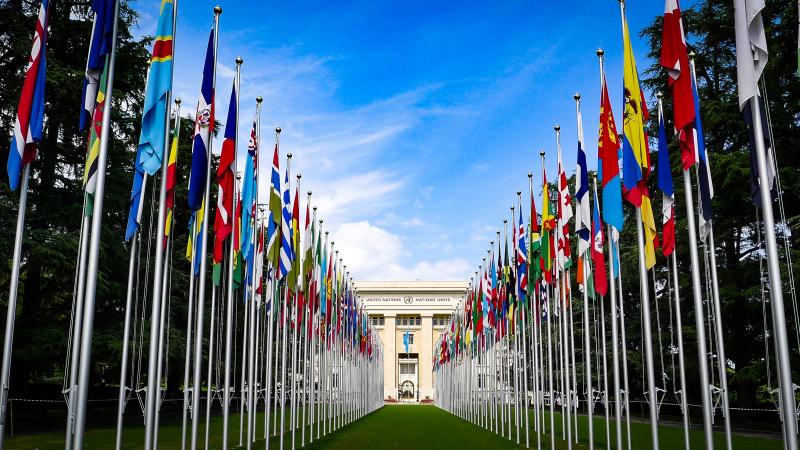Carbon capture carries safety risks, threatens property rights, drives up energy costs, report says
Companies looking to build carbon capture pipelines are utilizing the power of eminent domain when property owners won't willingly negotiate easements. In at least some cases, rather than go through the expense of litigating, landowners often agree to sell.
President Donald Trump has for the moment, made short work of Joe Biden’s climate agenda, with sweeping executive orders aimed at bringing down energy costs and increasing reliability.
During his campaign, while Trump vowed to go after EV mandates and the wind industry, he had little to say about carbon capture. Trump’s nominee for Interior Secretary, North Dakota Gov. Doug Burgum, has been a big proponent of the technology.
“I do know that within fossil fuels, the concern has been about emissions. And within emissions, we have the technology to do things like carbon capture to eliminate harmful emissions at the same time,” Burgum said during his confirmation hearing.
Burgum’s interest likely stems from the fact that North Dakota has a potential reservoir for depositing captured carbon dioxide, and the state stands to gain a lot of economic activity and federal subsidies from the industry.
Threats highlighted in new study
While many pro-oil and gas officials are betting that carbon capture will address greenhouse gas emissions, a new study by the Heartland Institute warns the technology drives up energy costs, creates a threat to private property rights, and poses safety risks.
“This paper focuses on average folks and their property rights, not exclusively, but it's a big part of it. Because that's getting lost in some of the debate over this stuff,” Dr. Sterling Burnett, co-author of the paper, told Just the News.
Eminent domain
Carbon capture and sequestration (CCS) works by capturing greenhouse gas emissions from an emitter, such as a power plant or manufacturing facility, and transports the gas through pipelines to geological formations where the gas is pumped and stored permanently underground — or that is the hope.
These pipelines can run hundreds of miles, meaning they cross state, federal and private land like any infrastructure project. Eminent domain can be used for infrastructure projects that provide a “public use,” so long as the property owner is given just compensation. In the past, the federal government and states used eminent domain for things like roads, parks, schools, railroads and public buildings.
Some recent Supreme Court decisions have allowed eminent domain to be used for projects that have a “public purpose,” as opposed to public use. In Kelo v City of New London, the Supreme Court sided with Pfizer, which sought to build a 24-acre campus in New London, Connecticut. Property owners who held out, such as Susette Kelo, had their homes seized via eminent domain. After the city seized and bulldozed homes in the area, Pfizer walked away from the project. Fortunately for Kelo, her house was relocated by historic preservationists, but other homeowners were not so lucky.
Utility and natural gas pipeline companies have used eminent domain for their projects, where federal law permits and where the project serves a public interest, such as transporting natural gas to heat homes. Where there’s no federal law, the use of eminent domain falls to the states. Currently, there’s no federal law governing the use of eminent domain for carbon capture pipelines, so these cases are handled on the state level.
Falling values
Summit Carbon Solutions is proposing a carbon capture network to transport emissions from 57 ethanol plants in five Midwest states to a site near Bismarck, North Dakota. The proposed route of the 2500-mile pipeline network crosses a lot of private land, and not all landowners have been willing to sell. Summit argues that it can use eminent domain for the project because it transports a commodity for public use and public benefit.
The use of eminent domain for carbon capture has become contentious. The South Dakota legislature is considering a bill to ban the practice, and last summer, the South Dakota Supreme Court rejected Summit’s arguments and denied it can use eminent domain. In June, however, public utility officials in Iowa granted conditional approval to the company to use eminent domain for its pipeline network, and Summit is still moving forward with the project.
Summit has said it successfully negotiated 80% of the land it needs through voluntary easements, but some landowners testified in North Dakota Public Service Commission hearings, the North Dakota Monitor reported, that they negotiated the easements only because they didn’t want to fight eminent domain in court, a costly and stressful process.
Burnett explained that fighting eminent domain in court can also result in decreased “just compensation,” if the land is ultimately seized. Carbon pipeline projects lower property values, so if the courts side with the CCS company, the price paid could be based on lower valuations.
Credits and subsidies: "a tremendous scam"
Burnett disputes companies’ claim that there’s a public use and benefit to CO2 pipelines. Carbon capture, he said, doesn’t produce any product that people use, as natural gas pipelines do, for example. Instead, the technology generates revenues through subsidies and selling carbon credits. These are credits that emitters purchase on a market from those who have abated or avoided emitting.
For example, Tesla, Politico reports, has earned $10.7 billion over 10 years selling credits it earns for producing electric vehicles to other automakers who produce gas-powered vehicles. This funding stream accounted for 33% of the company’s profits. Carbon capture companies can sell the credits they receive for abating emissions to coal-fired power plants, for example, so the coal plant can claim its emissions were offset.
While these credits aren’t mandated by law in all states or at the federal level, companies can improve environmental, social and governance (ESG) scores or make claims they operate 100% renewable, as Apple has done, even though it does not power its operations entirely with carbon-free electricity. Ultimately, Burnett said, the cost of the credits are passed down to the consumers.
“It's really a tremendous scam,” Burnett said.
Unable to breathe
Besides the threats to private property, CCS could also pose risks to public safety. In February 2020, residents of Satartia, Mississippi, saw a “big white cloud” rising in the sky. The cloud was from a carbon dioxide pipeline that had ruptured. More than 200 people were evacuated, and 45 people were hospitalized. According to NPR, “People lay on the ground, shaking and unable to breathe. First responders didn't know what was going on.”
Such threats can occur naturally as well. In 1986, carbon dioxide that had accumulated under Lake Nyos in Cameroon escaped and rolled down a valley at 60 miles per hour. The gas suffocated nearly 1,800 people and 3,500 livestock, as well as countless birds and insects. These natural events are exceedingly rare, but CCS will effectively create such carbon dioxide deposits in multiple locations across the world.
“You have to have a certain type of reservoir that prevents it for all time from going back into the atmosphere. And there are very few places that meet that standard,” Burnett explained. Should there be any deficiencies in the reservoir, “any humans or livestock nearby could be endangered.”
The report recommends that states pass laws prohibiting the use of eminent domain for CCS projects, or requiring that CCS companies provide three times the compensation for any land seized. Lawmakers should also increase pipeline and reservoir safety requirements, the report advises, to protect residents living around the infrastructure.
At the federal level, the report recommends, policymakers should delist carbon dioxide as a harmful greenhouse gas on scientific grounds and preclude the Environmental Protection Agency from regulating greenhouse gasses. The report also recommends removing government-backed carbon credit markets and subsidies for CCS projects.
Widespread opposition
Even absent any new regulations or changes to existing regulations supporting CCS, Burnett said the industry is going to face enormous challenges building its infrastructure. As with any large projects, there is widespread opposition from a variety of parties. While CCS could theoretically reduce greenhouse gas emissions, if successful, it would allow for more fossil fuel use. Environmentalists, Burnett said, are big opponents of CCS for that reason.
“What they really want is to end fossil fuel use. They don't want to figure out a way to reduce emissions and continue using fossil fuels,” he said.
The Facts Inside Our Reporter's Notebook
Links
- sweeping executive orders
- potential reservoir
- new study
- Supreme Court sided with Pfizer
- her house was relocated
- Summit Carbon Solutions
- considering a bill
- rejected Summitâs arguments
- Iowa granted conditional approval
- still moving forward
- North Dakota Monitor reported
- lower property values
- emitters purchase on a market
- Politico reports
- all states
- Apple has done
- According to NPR
- gas suffocated nearly 1,800 people
















